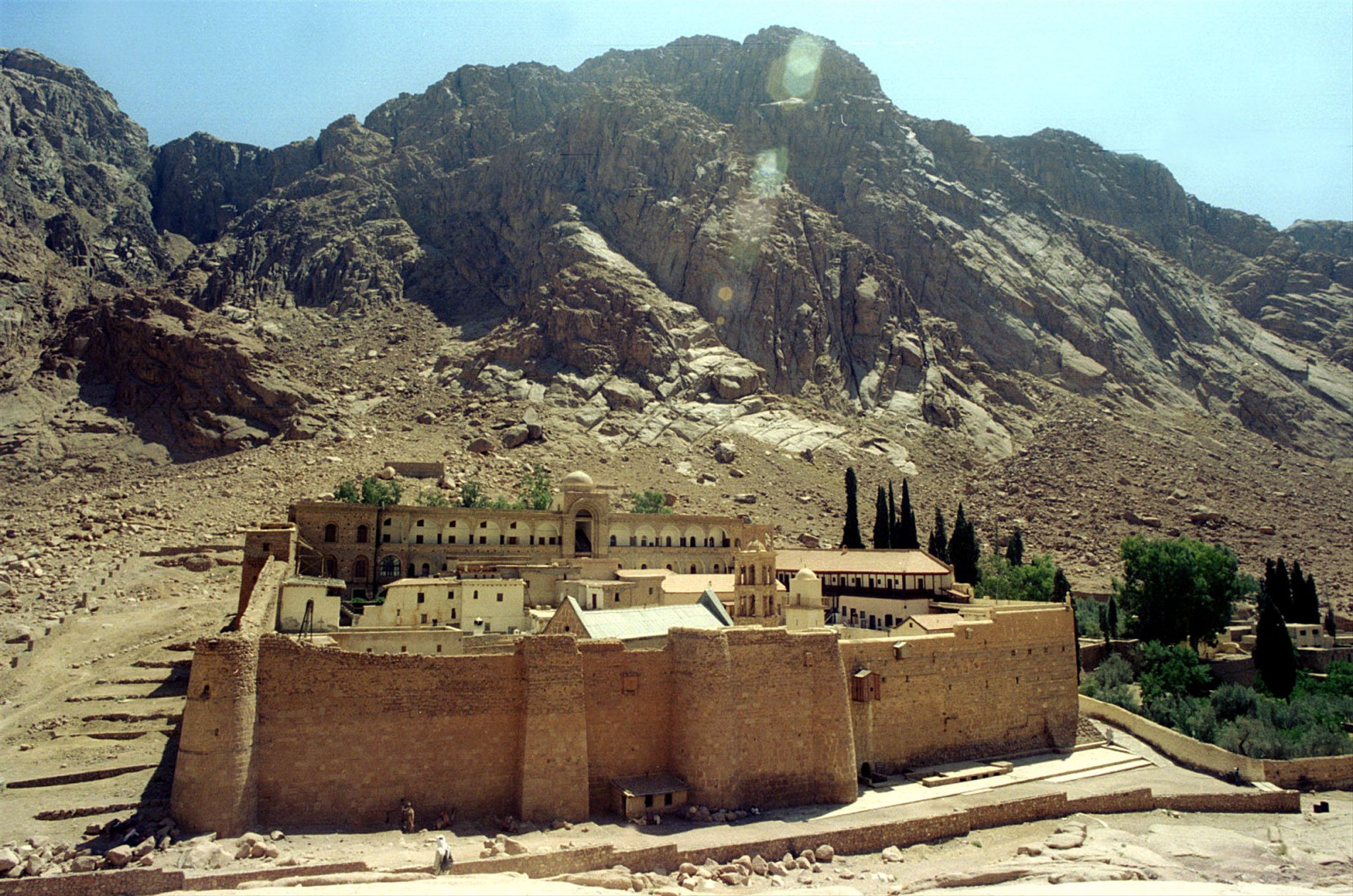
Ancient writings hidden in more than a hundred early Christian manuscripts have been discovered during an archive study of the world's oldest monastery in Egypt.
The library of the Sacred Monastery of the God-Trodden Mount Sinai was in the process of modernizing, making its vast collection old Christian texts available online, when researchers discovered there was more to some parchments than met the eye. A closer look at the mounds of text protected behind the walls of the 6th century monks' convent revealed writings, visible only through new, high-tech methods, the BBC reported.
A study of the 4,500 manuscripts—an assemblage of early Christian texts that dwarfs any library outside the Vatican—revealed at least 170 of them contained erased information. Using multi-spectral imaging of parchments, researchers were able to spot notes in obscure languages, ancient medical guides and Biblical revisions, which monks had once scrubbed off and written over.
Related: In Pompeii, researchers have found a first-ever imprint of an entire horse
The practice of recycling parchment was often the only recourse monks had if they were short on writing materials, repurposing neglected works in the library to create what is called a palimpsest.
As soon as the team of researchers began the laborious process of scanning every page in the vast vaults of the monastery library 33 times using 12 different wavelengths, Michelle P. Brown, researcher from the University of London, stumbled on a fascinating discovery. The oldest known copy of the gospels in Arabic was a palimpsest that once carried an ancient Greek medical text on treating scorpion bites.
The lost text prescribes an ointment made out of a plant boiled in olive oil for the bite. Recycling more pages, the remainder of the manuscript revealed other writings underneath, focusing on politics during the early middle ages that revealed "incredibly complex interaction of different cultures," according to professor Brown.
Although deemed of lesser importance by the monks that deleted the early layers of writing, some of the erased texts could change the academic understanding of history. The Arabic translation of the gospels revealed a fascinating sequence of writings beneath it, bearing traces of Greek, Latin and Anglo-Saxon scribes' notes. This challenges the mainstream view about how closely Western cultures interacted with the Middle East before the 12th century.
Founded in 527 by the Byzantine Empire at the foot of Mount Sinai, where Moses is said to have spoken to God, the monastery's history has continued unbroken since then, housing priceless texts and icons behind its walls, according to the Encyclopaedia Britannica. It survives today under direct protection from the Bedouin Muslim community outside its walls, bound by a centuries-old edict that the Egyptian government continues to uphold.
Uncommon Knowledge
Newsweek is committed to challenging conventional wisdom and finding connections in the search for common ground.
Newsweek is committed to challenging conventional wisdom and finding connections in the search for common ground.
About the writer
I am a Staff Writer for Newsweek's international desk. I report on current events in Russia, the former Soviet Union ... Read more
To read how Newsweek uses AI as a newsroom tool, Click here.








